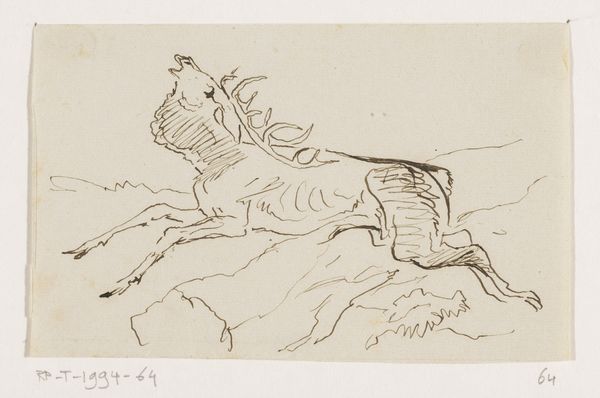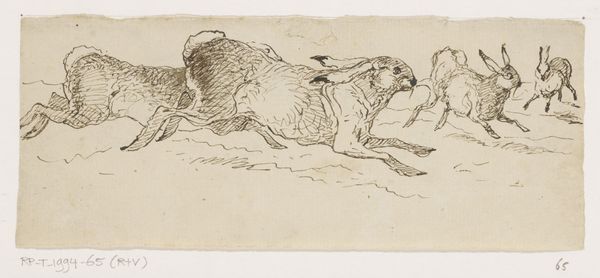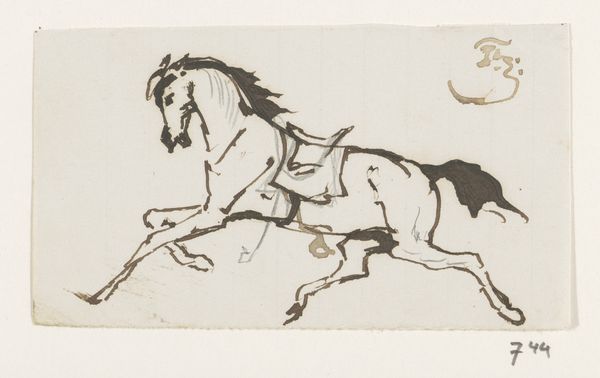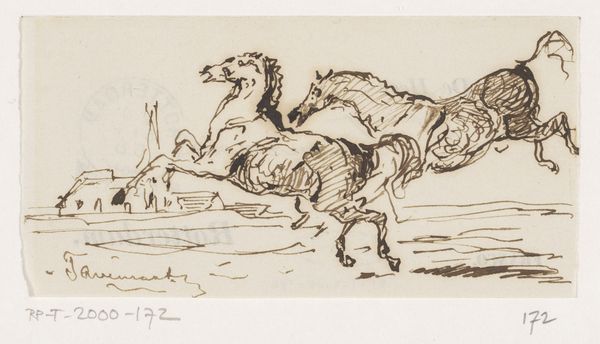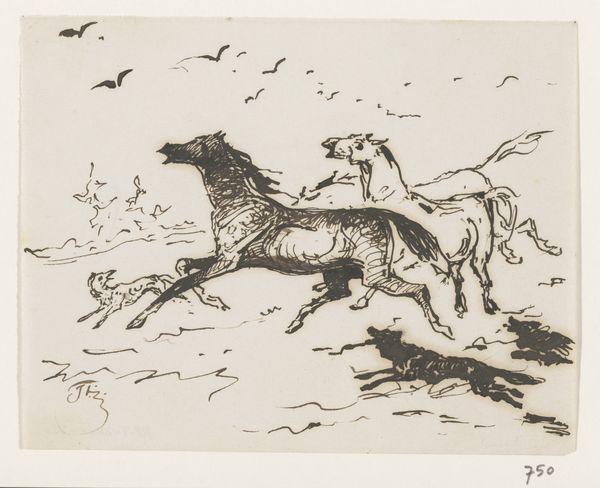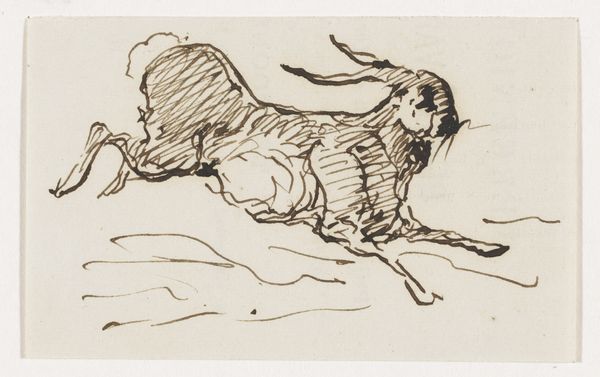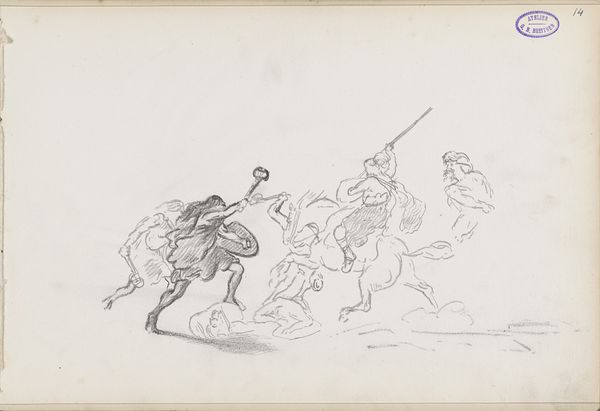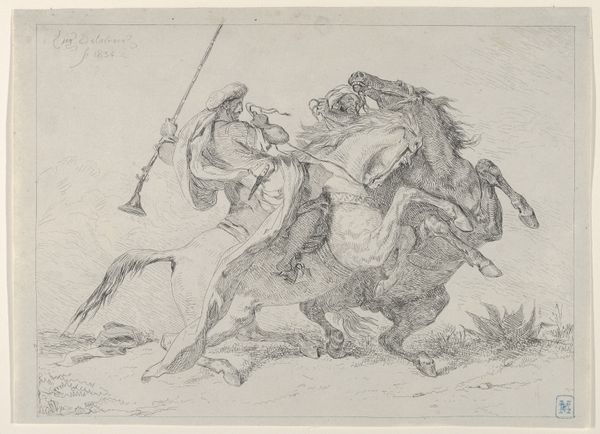
Dimensions: height 108 mm, width 190 mm
Copyright: Rijks Museum: Open Domain
Editor: This is “Circuspaard met dwerg als berijder,” or “Circus Horse with Dwarf Rider,” by Johannes Tavenraat, created sometime between 1840 and 1870. It's an ink drawing. It strikes me as a bit grotesque, with the exaggerated features of the rider and the horse's straining form. How do you interpret this work? Curator: I see a powerful commentary on social dynamics. The era witnessed a surge in interest in physiognomy and theories around inherent physical characteristics. The depiction of the "dwarf" – a term loaded with historical prejudice – as a rider raises questions. Who is in control? Is this a celebration of marginalized figures, or a reinforcement of stereotypes? Editor: I hadn't thought of it that way. The image feels so spontaneous, almost like a caricature. Curator: But even caricatures carry cultural weight. Consider the Romani people who frequently were associated with performing animals, they themselves became marginalized within this popular entertainment. Tavenraat might be capturing—perhaps even unintentionally—the inherent power dynamics within that sphere. Is he celebrating the Romani's resilience or just further emphasizing their perceived difference? Editor: So, you're saying even seemingly lighthearted images like this can reveal uncomfortable truths about how society views marginalized groups? Curator: Precisely! It prompts us to consider the gaze through which such representations are created and consumed. And that these images should always provoke more questions than answers, always. Editor: I'll definitely look at similar works with a more critical eye from now on. Thank you! Curator: A worthwhile venture. There's a wealth of stories hiding within even the simplest images.
Comments
No comments
Be the first to comment and join the conversation on the ultimate creative platform.

